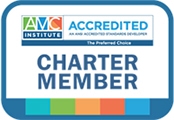Tips for holding onto your top talent
Barry Deutsch raises the question - “What’s the risk of not holding onto your top performers?”
Much has been written about the changing landscape of recruiting and keeping on top talent, or as Eric Herrenkohl refers to them – “A Players", and the many risks companies run if they do not do all they can to keep their best performers.
So what do we do to ensure we keep our best?

Deutsch raises some great questions that senior management of all companies should ask themselves:
- Do we accept mediocrity?
- Are we willing to change the way we hire/fire/train?
- Do we have a regular process to recognize/reward our top performers (not just by throwing more money at them)
- Do we have a good process of providing our teams with clear expectations and providing appropriate feedback?
It’s easy for managers to say that they do not accept mediocrity, but how many realize that if they retain individuals who are not top performers they are making a statement to the rest of their team that mediocrity is acceptable.
The cost to a company of keeping non-A-players shows up in several ways – average/poor profitability, losing business to competitors, and failed or missed execution, to name a few.
I have the privilege of serving as the CEO of a successful professional services firm that supports non-profits. During my time with the company we have grown from a staff of ten to 180 people with two offices.
A few tips I have learned along the way (some the hard way):
- It all starts with the hiring of top people – to do this you must have a job description that not only spells out the duties, but also what success looks like. Ensure that all potential candidates are interviewed by various individuals within your company – you would be amazed by insights you will receive.
- Training - you must have a clear documented process for not only onboarding of new staff, but also ongoing training. This training needs to include how to do their daily tasks, but also helping the individual to grow – you need to invest in your top resources!
- Feedback – in order for anyone to be successful you must provide clear expectations/metrics and regular feedback (once a year “performance review” ain’t going to cut it!)

The race to hire top talent is going to get more challenging in the years ahead as the boomers retire, and with less people entering the work force.
Hiring and retaining top people doesn’t just happen. Companies must have a well thought out strategy, with many internal “champions” to ensure you are hiring the best, and supporting them as they progress in their careers
Don’t you want to be hiring and retaining top talent?




